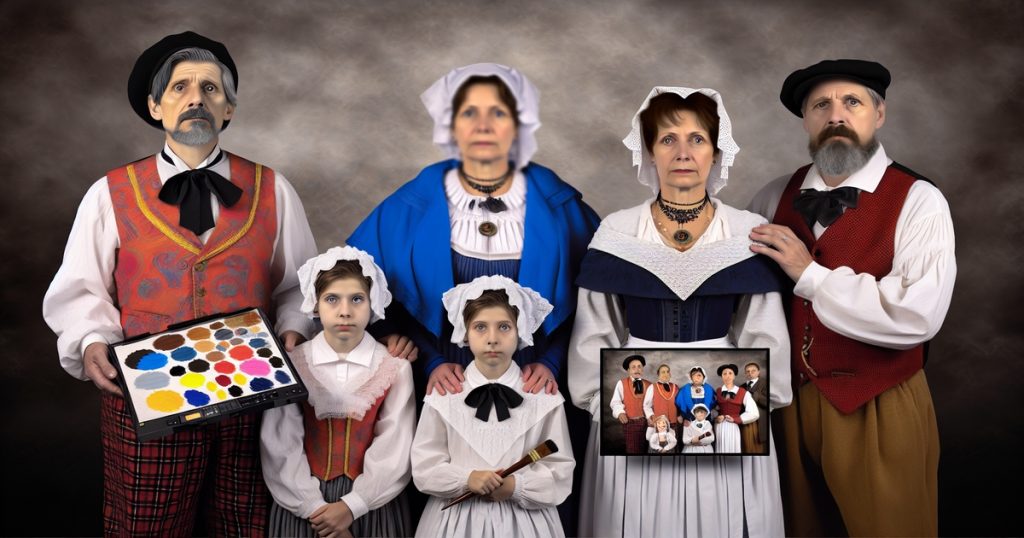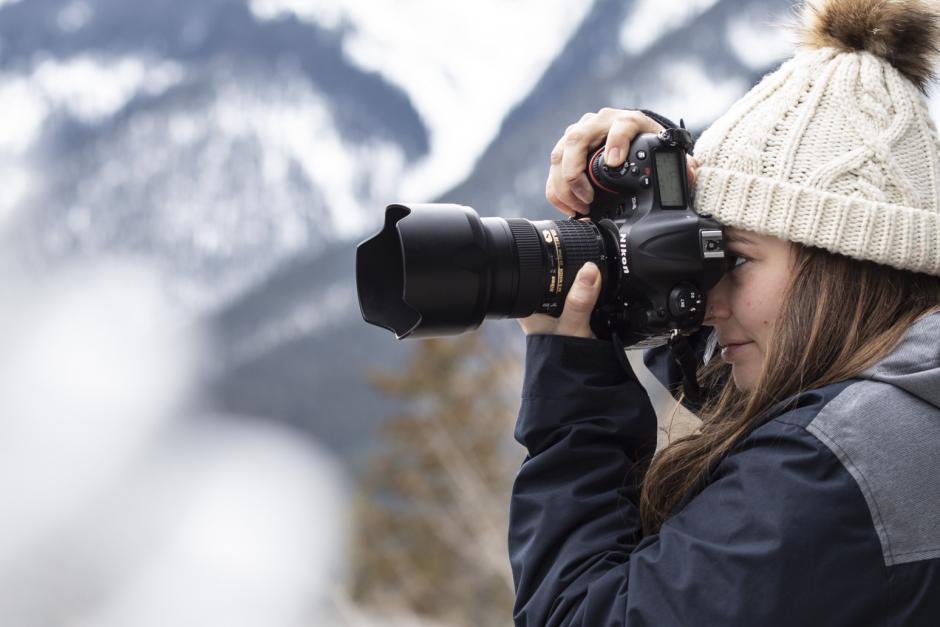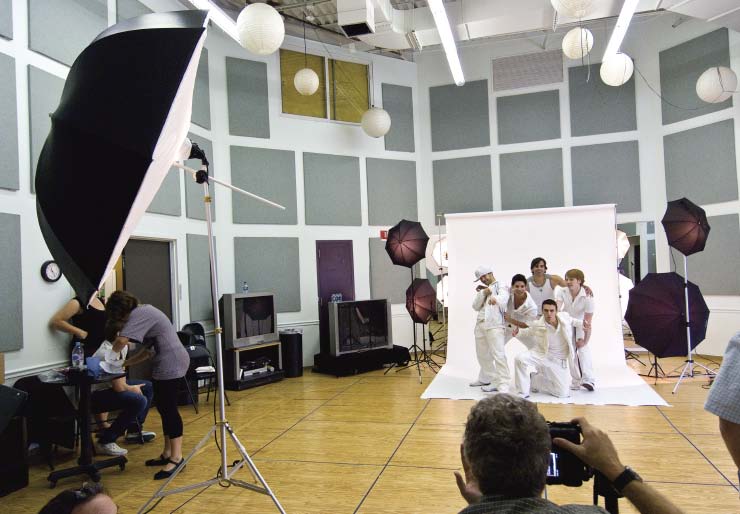Portrait Origins
Cultural Roots
Family Portrait’s creation was influenced by various cultural factors. Pink’s troubled childhood played a significant role in shaping the song’s themes. Released in 2002, the track resonated with listeners dealing with family issues.
The societal backdrop during the song’s release highlighted the importance of addressing family dynamics and mental health. The emotional depth of “Family Portrait” struck a chord with many, sparking conversations about healing and self-reflection.
Artistic Beginnings
Prior to crafting “Family Portrait,” Pink underwent a transformative artistic journey. Collaborating with producer Scott Storch, she poured her emotions into the songwriting process. The synergy between Pink’s raw lyrics and Storch’s production skills resulted in a powerful ballad.
The song stands out for its poignant lyrics, melodic composition, and Pink’s emotive delivery. The blend of personal storytelling and musical craftsmanship elevated “Family Portrait” to become a timeless piece in Pink’s discography.
Societal Impact
Cultural Influence
Global Perspectives
Music, like any art form, resonates differently across the globe. “Family Portrait” by Pink received widespread acclaim in various countries. In the United States, the song topped the charts for its raw emotion and relatable lyrics. In contrast, European audiences appreciated its musical complexity and depth.
The song’s message of family struggles struck a chord with listeners worldwide. Its themes of healing and self-discovery transcended cultural boundaries. Fans from diverse backgrounds found solace in the song’s depiction of familial challenges.
- Pros:
- Emotional resonance worldwide
- Universal themes connecting with a broad audience
- Musical complexity is appreciated by different cultures
Tradition Evolution
From traditional ballads to modern pop hits, family portrayals in music have evolved over time. “Family Portrait” marked a shift towards more authentic and vulnerable representations of family dynamics in songs. This evolution challenged conventional ideas of picture-perfect families often portrayed in older music.
Modern storytelling techniques have revolutionized how artists depict family relationships in songs. Through poignant lyrics and evocative melodies, “Family Portrait” delves into the complexities of familial bonds. The song’s impact on redefining family narratives in music is profound and enduring.
- Challenged traditional notions of family portrayal
- Embraced authenticity and vulnerability in depicting family dynamics
Artistic Value
Expression Forms
Pink’s “Family Portrait” utilizes a range of expression forms to convey its powerful message. Through poignant lyrics and evocative music video visuals, the song delves into themes of family dynamics and personal struggles. Pink’s raw and vulnerable vocal delivery adds depth to the emotional impact of the song, resonating with listeners on a profound level.
The symbolism and imagery in “Family Portrait” play a crucial role in portraying the complexities of familial relationships. The shattered glass, empty frames, and fragmented scenes depicted in the music video symbolize brokenness and unresolved issues within a family unit. These visual elements effectively communicate the pain and longing for healing that permeate the song’s narrative.
- Use of poignant lyrics
- Evocative music video visuals
- Symbolism through shattered glass and empty frames
Critical Reception
“Family Portrait” has garnered widespread critical acclaim for its authenticity and emotional resonance. Music reviewers have praised Pink’s candid approach to addressing sensitive topics such as family conflict and childhood trauma. The song’s relatable lyrics and heartfelt delivery have struck a chord with audiences worldwide, earning it recognition as a standout track in Pink’s discography.
Critics have lauded Pink’s authenticity and storytelling prowess in “Family Portrait,” highlighting her ability to connect with listeners on an emotional level. The song’s honest portrayal of familial struggles has been commended for its relatability and universal appeal. By drawing from her own experiences, Pink infuses the song with genuine emotion, creating a compelling narrative that resonates with diverse audiences.
- Relatable lyrics
- Heartfelt delivery
- Authentic storytelling
Evolution in Art
Style Changes
Pink’s music took a significant turn with “Family Portrait,” showcasing a more vulnerable and introspective side. The song delves into personal struggles and emotional depth, departing from her earlier rebellious and edgy image. This shift in style resonated with audiences, drawing praise for its raw authenticity.
The evolution of Pink’s musical style and themes can be seen vividly in “Family Portrait.” The song’s poignant lyrics touch on themes of family dynamics, childhood trauma, and healing. This departure from her usual upbeat anthems showcased her versatility as an artist. Listeners connected deeply with the emotional honesty portrayed in the song.
Technological Advances
Technological advancements played a crucial role in producing and promoting “Family Portrait.” Innovations in music production allowed for a more polished sound, enhancing the song’s impact. The use of advanced recording techniques and equipment contributed to the rich texture of the track.
The role of technology extended beyond production to dissemination, enabling “Family Portrait” to reach a global audience. Social media platforms, streaming services, and online marketing strategies facilitated widespread exposure for the song. This digital landscape transformed how music was shared and consumed, amplifying Pink’s reach worldwide.
Significance Today
Family Bonds
“FAMILY PORTRAIT” by Pink resonates with listeners through its powerful portrayal of family bonds. The song delves into themes of parent-child relationships and the impact of family dynamics on personal growth. Listeners often relate to the lyrics, drawing parallels to their own experiences with family members.
The emotional depth of “Family Portrait” strikes a chord with audiences, leading them to reflect on their family connections. Many listeners find solace in the song’s raw depiction of familial struggles, fostering a sense of empathy and understanding toward their loved ones. This emotional resonance strengthens familial ties and encourages open communication within families.
- Encourages reflection on personal family dynamics
- Promotes empathy towards family members
- Fosters open communication within families
Memory Preservation
“Family Portrait” acts as more than just a song; it serves as a memory-preservation tool for listeners. The nostalgic elements embedded in the lyrics evoke memories from listeners’ pasts, triggering emotions tied to significant life moments. Through music, individuals can revisit cherished memories and preserve them through the lens of the song.
The song functions as a time capsule, capturing specific moments and emotions experienced by listeners during pivotal stages of their lives. By listening to “Family Portrait,” individuals can transport themselves back in time, reliving past events and emotions associated with their family relationships.
- Evokes nostalgia and personal memories
- Captures significant life moments for listeners
- Allows individuals to relive past emotions through music
Critical Analysis
Art Criticism
Pink’s “Family Portrait” is renowned for its poignant composition and introspective lyrics. The song delves into the complexities of family dynamics, touching on themes of conflict and reconciliation. The composition skillfully blends emotive melodies with raw, honest storytelling. Pink’s lyrical prowess shines through in her ability to convey deep-seated emotions with authenticity.
The effectiveness of Pink’s storytelling in “Family Portrait” lies in her raw and vulnerable delivery. By infusing personal experiences into the song, she creates a powerful connection with listeners. The emotional depth conveyed through her vocals resonates with audiences, evoking empathy and understanding. Pink’s ability to convey pain, longing, and hope through her voice elevates the song to a deeply emotive level.
The music video for “Family Portrait” serves as a visual representation that complements the song’s narrative. Through symbolic imagery and evocative visuals, the video enhances the listener’s understanding of the song’s themes. The use of color palettes, settings, and cinematography adds layers of meaning to the storyline, enriching the overall experience for viewers.
Public Perception
Upon its release, “Family Portrait” garnered widespread acclaim for its honesty and vulnerability. The public perception of the song was overwhelmingly positive, with many praising Pink’s courage in addressing difficult familial issues. Listeners resonated with the relatable themes presented in the song, finding solace in its candid portrayal of family struggles.
The emotional resonance of “Family Portrait” struck a chord with fans worldwide. Many shared personal stories of familial challenges and how the song provided them with a sense of validation and comfort. Pink’s ability to tap into universal emotions created a sense of community among listeners, fostering discussions around shared experiences and healing.
Public discussions surrounding “Family Portrait” often revolved around its themes of childhood trauma, resilience, and healing. Fans engaged in conversations about overcoming family conflicts and seeking closure from past wounds. The song sparked introspection on personal relationships and inspired individuals to confront their own emotional baggage.
Societal Impact
Social Norms
Pink’s “Family Portrait” challenged traditional societal norms by addressing complex family structures and dynamics. The song pushed boundaries by openly discussing issues like divorce and family conflict. This candid approach sparked conversations about the reality of modern families.
The impact of “Family Portrait” went beyond entertainment, serving as a catalyst for redefining traditional family values. Pink’s honest portrayal of familial struggles encouraged listeners to reevaluate their perceptions of what constitutes a healthy family unit. By shedding light on these issues, the song prompted society to confront uncomfortable truths about family life.
Pink’s bold depiction of family issues in “Family Portrait” played a pivotal role in shaping social perceptions. Through her raw and emotional lyrics, she highlighted the complexities of relationships within families. This portrayal forced listeners to confront the often glossed-over realities of familial discord, leading to a more nuanced understanding of family dynamics.
Identity Formation
“Family Portrait” plays a significant role in shaping listeners’ identities by resonating with personal experiences and emotions. The song’s themes of resilience and self-discovery strike a chord with individuals navigating their own familial challenges. By connecting on an emotional level, the song becomes a mirror through which listeners reflect on their own identities.
Music, including “Family Portrait,” serves as a powerful tool for reflecting and influencing personal identity. The relatable nature of Pink’s lyrics allows listeners to see themselves in her story, fostering a sense of belonging and understanding. As individuals relate to the song’s message, they are empowered to embrace their unique identities and find strength in their struggles.
Pink’s “Family Portrait” inspires empowerment and self-reflection among listeners grappling with familial issues. The song’s themes of healing and growth resonate with those seeking closure or understanding within their own families. By providing a platform for introspection, the song encourages individuals to confront their pasts and strive for personal growth.
Family Portraits in Art History
Iconic Examples
“Family Portrait” stands out as an iconic example of a song that delves deep into family themes. The powerful lyrics resonate with many individuals, especially children of divorced parents, capturing the emotional complexities of family dynamics. This song has transcended its initial release to become a symbol of resilience and self-reflection for listeners worldwide.
Exploring the enduring impact of “Family Portrait,” it’s evident how music can serve as a mirror reflecting personal experiences. Through this song, listeners find solace in knowing that they are not alone in navigating the challenges of familial relationships. Its raw honesty and vulnerability make it a timeless piece that continues to touch hearts across generations.
Artist Contributions
Pink’s contribution to the music industry through “Family Portrait” is profound and multifaceted. The song not only showcases her exceptional vocal abilities but also highlights her prowess as a skilled songwriter. Pink’s ability to infuse raw emotions into her music sets her apart, making her a revered figure in the industry.
Modern Family Portraits
Digital Evolution
The digital evolution has significantly impacted the outreach of “Family Portrait.” Online platforms played a pivotal role in disseminating both the song and its accompanying video. Through platforms like YouTube and social media, the song gained immense popularity worldwide.
The digital landscape enabled “Family Portrait” to transcend geographical boundaries, reaching a global audience with its powerful message. The music video, available for streaming on various platforms, garnered millions of views, showcasing the impact of digitalization on music dissemination.
- Pros:
- Wide global reach
- Increased accessibility to audiences
- Cons:
- Potential oversaturation
- Challenges in standing out amidst digital content influx
Contemporary Styles
“Family Portrait” seamlessly integrates with contemporary music styles and trends, resonating with modern listeners. Despite being released years ago, the song’s themes remain relevant in today’s dynamic music industry landscape. Pink’s unique storytelling approach continues to captivate audiences across generations.
The enduring appeal of “Family Portrait” lies in its ability to address universal themes such as family dynamics and personal struggles. By incorporating relatable narratives into her music, Pink establishes a deep emotional connection with her fans. This connection transcends time, making “Family Portrait” a timeless piece in modern music history.
- Key Information:
- Themes of family relationships
- Emotional storytelling by Pink








